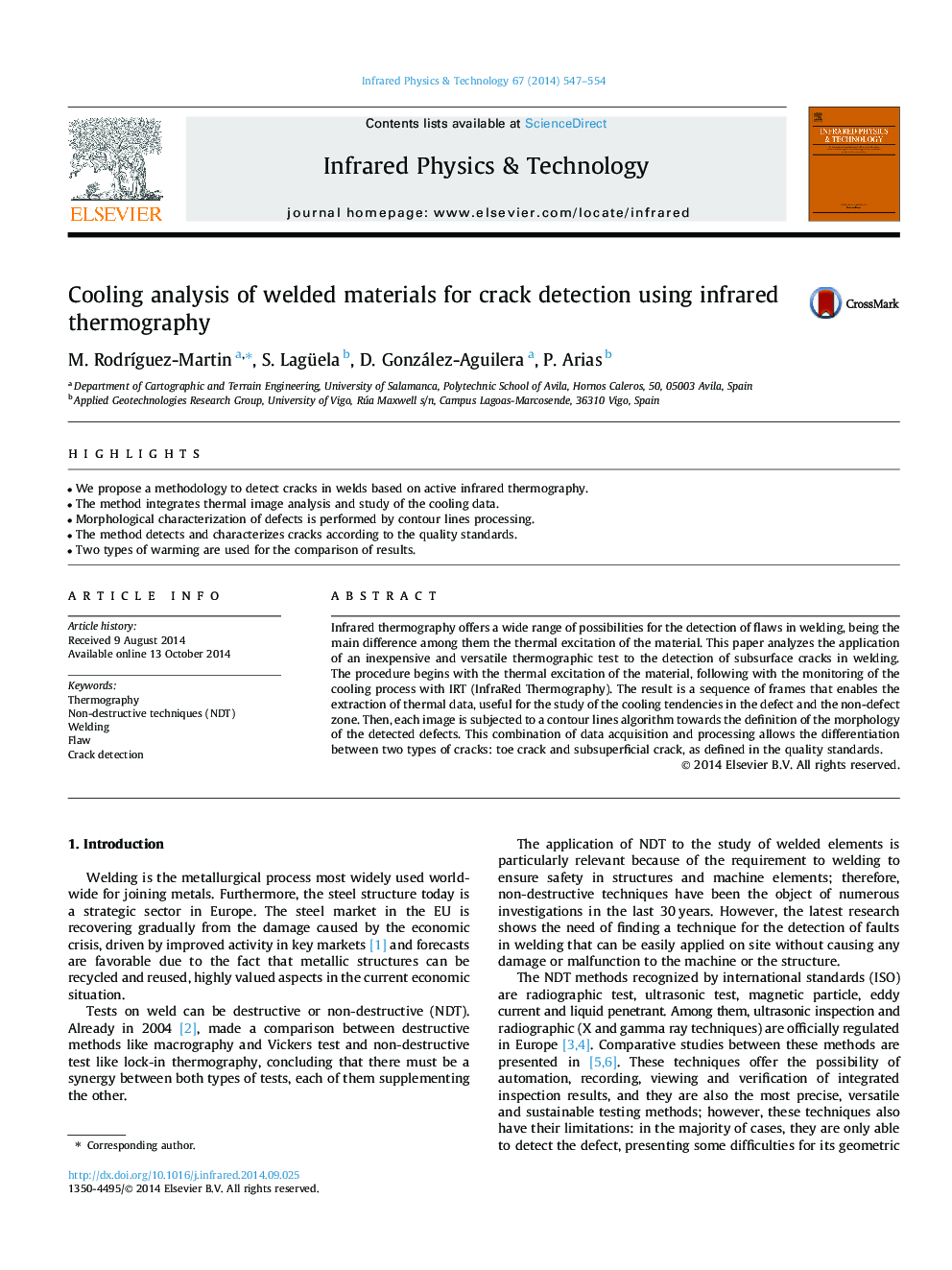| Article ID | Journal | Published Year | Pages | File Type |
|---|---|---|---|---|
| 1784266 | Infrared Physics & Technology | 2014 | 8 Pages |
•We propose a methodology to detect cracks in welds based on active infrared thermography.•The method integrates thermal image analysis and study of the cooling data.•Morphological characterization of defects is performed by contour lines processing.•The method detects and characterizes cracks according to the quality standards.•Two types of warming are used for the comparison of results.
Infrared thermography offers a wide range of possibilities for the detection of flaws in welding, being the main difference among them the thermal excitation of the material. This paper analyzes the application of an inexpensive and versatile thermographic test to the detection of subsurface cracks in welding. The procedure begins with the thermal excitation of the material, following with the monitoring of the cooling process with IRT (InfraRed Thermography). The result is a sequence of frames that enables the extraction of thermal data, useful for the study of the cooling tendencies in the defect and the non-defect zone. Then, each image is subjected to a contour lines algorithm towards the definition of the morphology of the detected defects. This combination of data acquisition and processing allows the differentiation between two types of cracks: toe crack and subsuperficial crack, as defined in the quality standards.
